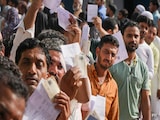In the lush yet perilously isolated landscape of southern Assam, the Barak Valley, home to over four million Indians, stands at a crossroads. Despite its rich cultural heritage, its pivotal role in India's linguistic and freedom movements, and its geopolitical significance, the region today is grappling with chronic neglect. This year's monsoon, like every year before, has turned a precarious situation into a crisis: collapsing bridges, paralyzed railways, blocked national highways, and skyrocketing airfares. A citizen's heartfelt appeal to Prime Minister Narendra Modi lays bare the urgency for a sustained and accountable national response.
At the heart of this crisis is the fragile Lumding-Badarpur railway line, the lifeline connecting Barak Valley to the rest of Assam and India. In the last five years alone, this corridor snaking through the landslide-prone hills of Dima Hasao has seen at least seven major disruptions.
Embankment failures, track washouts, and collapsing infrastructure are annual features of the monsoon, isolating the valley for weeks, sometimes months. The consequence? Passengers stranded, freight halted, medical emergencies deferred, and businesses brought to their knees.
Parallelly, the road infrastructure, especially National Highways 6, 27, and 54, suffers from recurring landslides, poor maintenance, and weak structural integrity.
The collapse of the Harang Bridge on the Silchar-Kalain route, even after repairs worth Rs 1.37 crore, is a glaring example of mismanagement and engineering failure. That both road and rail links can fail simultaneously is not just a development failure; it's a threat to national security. Barak Valley shares an international border with Bangladesh. Robust infrastructure in such regions isn't a luxury; it is a necessity for border management, troop mobility, and sovereignty.
What amplifies the suffering is the absence of affordable alternatives.
Air travel, often the only viable route during monsoon, is prohibitively expensive. Flights from Silchar to Guwahati costing Rs 15,000 to Rs 18,000, which is 10 times higher than equivalent routes in nearby Tripura, demonstrate the market's failure and administrative indifference.
The poor, students, patients, and working-class people are priced out of mobility. This is more than an inconvenience; it's structural exclusion.
Beyond infrastructure, this appeal reveals a deeper malaise: four decades of institutional neglect, irrespective of the party in power. Whether the Congress, the BJP, or regional coalitions, no administration has treated Barak Valley with the urgency it deserves.
Development projects are delayed or shelved, funding is piecemeal, and implementation is often shoddy. Silchar, Hailakandi, and Karimganj, once bustling trade towns, now languish in disrepair. The message to residents is clear: they are peripheral to both the state and national imagination.
Yet, this valley is no backwater. Barak Valley's people have been at the forefront of national service, sending soldiers, scientists, civil servants, and artists to every corner of India.
In 1961, 11 martyrs gave their lives in the Bengali Language Movement, securing constitutional recognition for their mother tongue in Assam. This region has historically defended the plural, inclusive ethos of India. To treat it now as a disconnected outpost is not only unjust but also politically shortsighted.
The current appeal outlines a clear and actionable roadmap, deserving of immediate attention. Among the key proposals are:
Rail revamp: Upgrade the Lumding-Badarpur line with geo-engineered landslide barriers and consider doubling the track. Fast-track the Lanka-Chandranathpur (Moinarband) line, offering an alternative route less vulnerable to monsoon disruption.
Road infrastructure: Undertake urgent repairs of NH 6, NH 27, and NH 54, especially in landslide-prone areas. The Border Roads Organisation (BRO) and the National Highways Authority of India (NHAI) must coordinate to ensure climate-resilient infrastructure.
Affordable air travel: Reintroduce UDAN flights from Silchar and regulate price surges via DGCA and MoCA. Airfare must be capped during emergencies to prevent profiteering.
Waterways and flood mitigation: Revive inland waterways through the Barak River and invest in modern drainage and flood management systems, especially in Silchar and Karimganj.
Transparent governance: Implement a central dashboard to monitor the time-bound execution of development projects. Administrative decentralization should empower Barak Valley to set its development priorities.
Industrial plan: Leverage the valley's agricultural, tea, and bamboo industries, and promote cross-border trade with Bangladesh to generate employment and attract investment.
The broader implication of this appeal is a reminder that development and national integration go hand-in-hand. Ignoring the infrastructural agony of Barak Valley undermines India's vision of Sabka Saath, Sabka Vikas, Sabka Vishwas. The Prime Minister's outreach to remote and border regions must not remain symbolic. It should translate into sustained infrastructure, decentralization, and economic planning.
Equally important is political messaging. In recent years, the government has aggressively pushed for Act East and North-East Development as flagship goals. If Barak Valley, despite being home to four million Indian citizens, continues to be excluded from these narratives, it signals a gaping contradiction between policy and practice. Connectivity, in this context, is not just about roads or flights; it is about belonging.
Civil society groups in Barak Valley repeatedly showed their resilience and democratic patience. But that social capital is not infinite. Repeated neglect may push the region toward deeper alienation and regionalism, a sentiment already beginning to take root in the youth and intelligentsia. Ignoring these signs would be a costly political mistake.
It's time to act not just to repair bridges and railway tracks, but to rebuild trust and ensure equity. India cannot afford to treat Barak Valley as a logistical afterthought or a seasonal crisis zone. It must be integrated into the national developmental arc with the seriousness it deserves.
As the monsoon rain falls once again and the valley stands cut off, the question echoes louder than ever: How long must Barak Valley wait to be connected not just by roads and railways, but by justice and vision?
The situation in Barak Valley is not just a matter of local concern; it is a national challenge that demands immediate and transformative action. For far too long, this region has endured apathy masked as delay, tokenism in place of investment, and resilience mistaken for acquiescence. The time for waiting has passed.
This appeal is not a cry for charity; it is a rightful demand for parity. Barak Valley is not asking for special treatment, only for what any citizen of India deserves: reliable infrastructure, equitable development, administrative accountability, and a voice in shaping its future. A nation that speaks of inclusive growth and regional empowerment cannot afford to let four million citizens remain trapped in cyclical isolation and infrastructural decay.
The blueprint for change is already on the table: rail modernization, road reconstruction, subsidized air connectivity, inland waterways, industrial revival, and flood-resilient urban planning. What's missing is not the knowledge or capability but political will and coordinated execution.
Let this monsoon be the last one that brings paralysis instead of prosperity. Let this year be remembered not for another collapse, but for a national commitment to rebuild, reconnect, and reintegrate Barak Valley into the developmental core of Assam and India. If we truly believe in Sabka Saath, Sabka Vikas, Sabka Vishwas, then there can be no further delay.
The Barak Valley doesn't need sympathy; it needs serious, sustained action. Let this be the turning point.
(Dr Prosenjit Nath is a technocrat, political analyst, and author. He writes on national, geopolitical, and social issues)
Disclaimer: These are the personal opinions of the author















